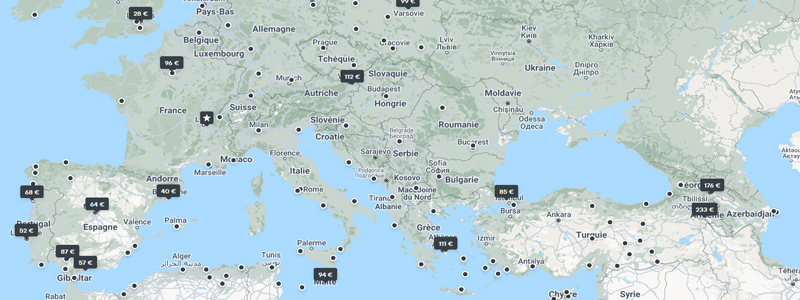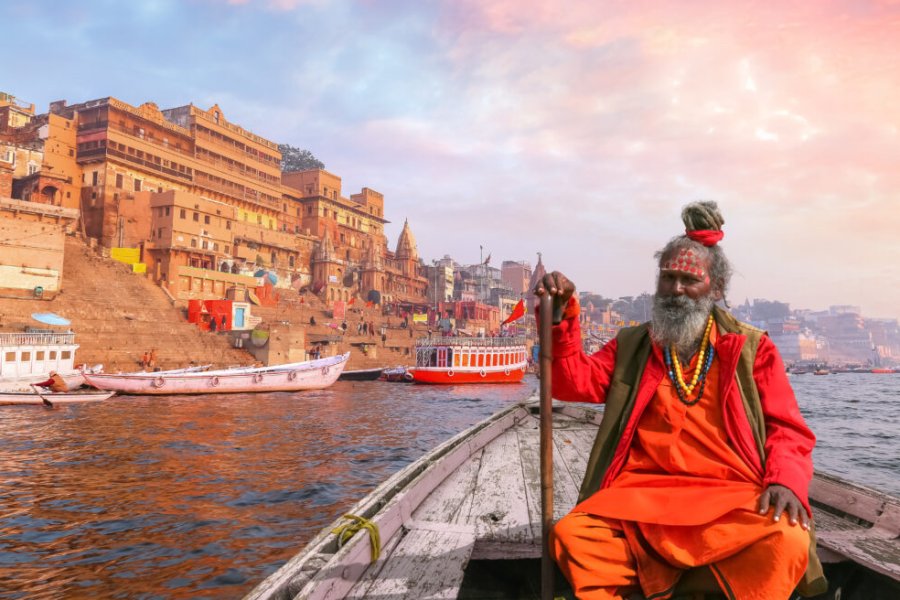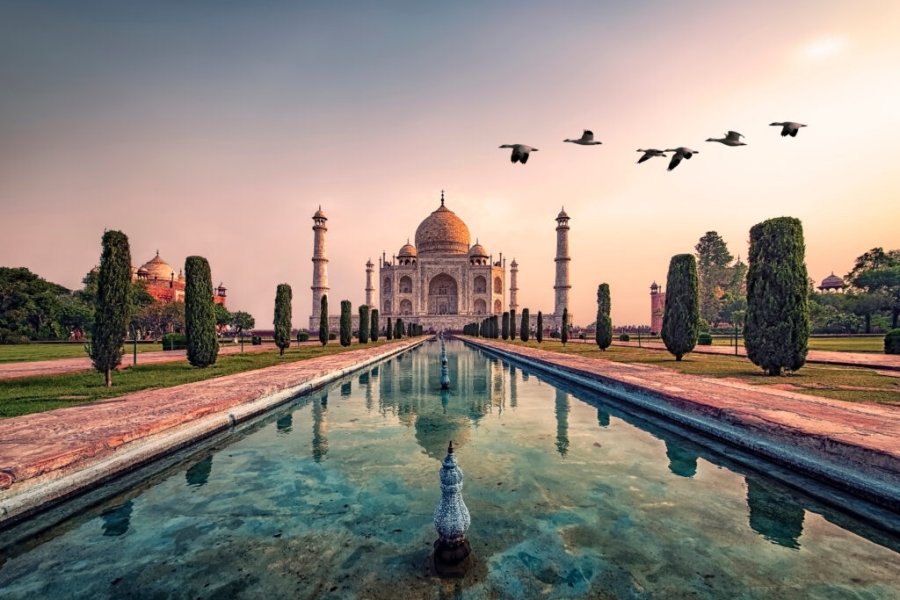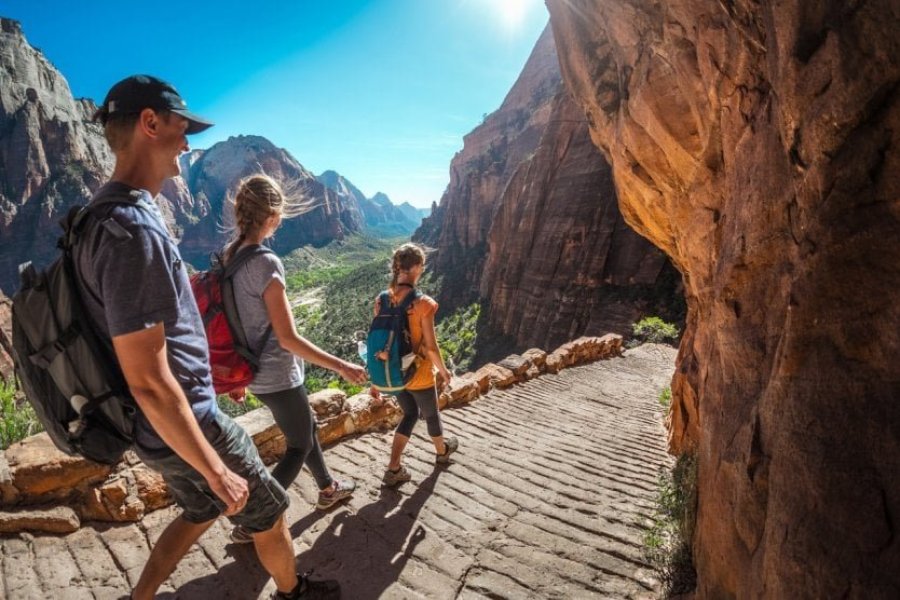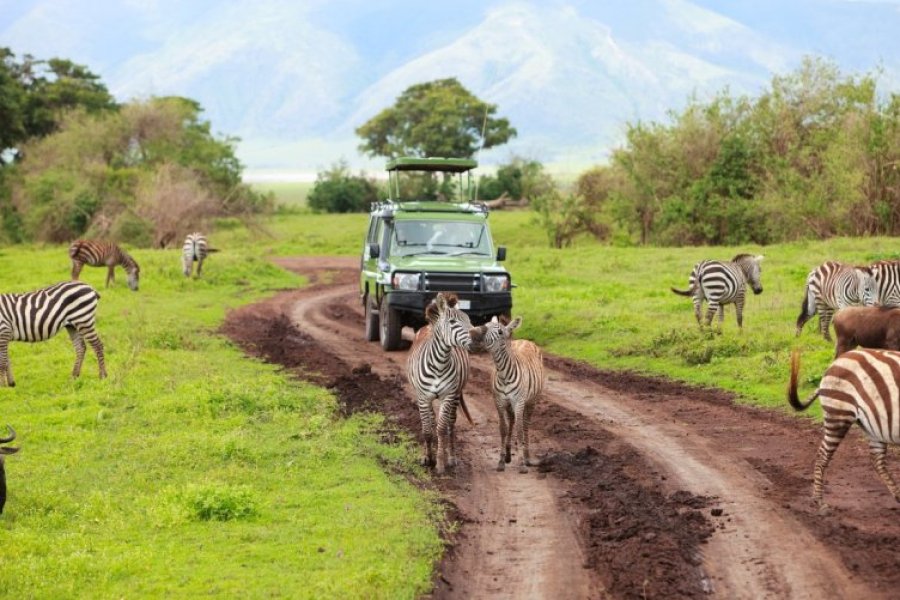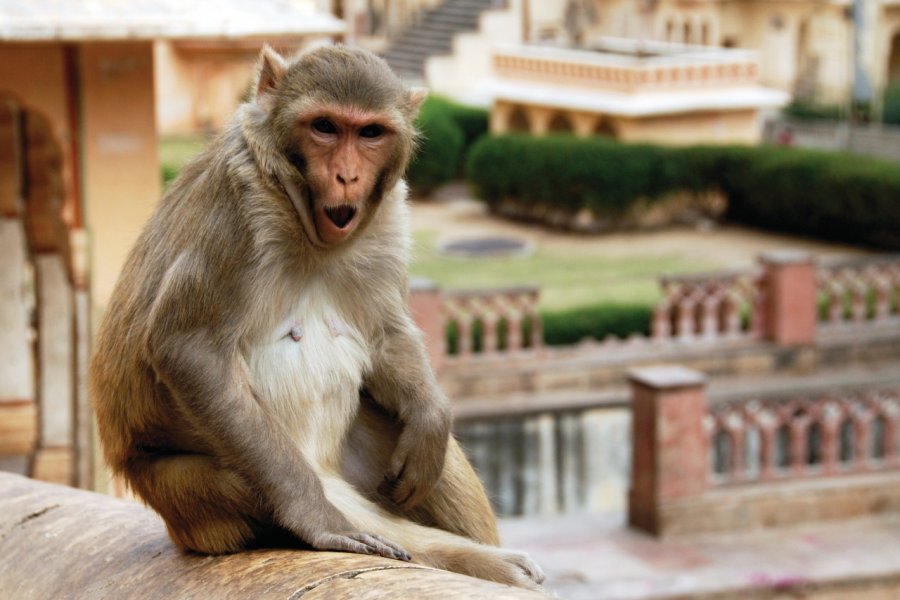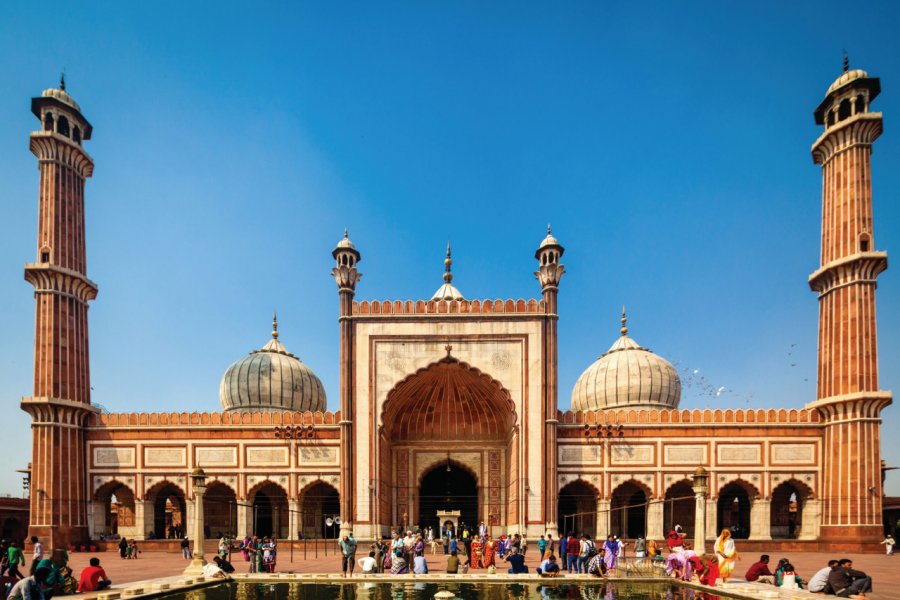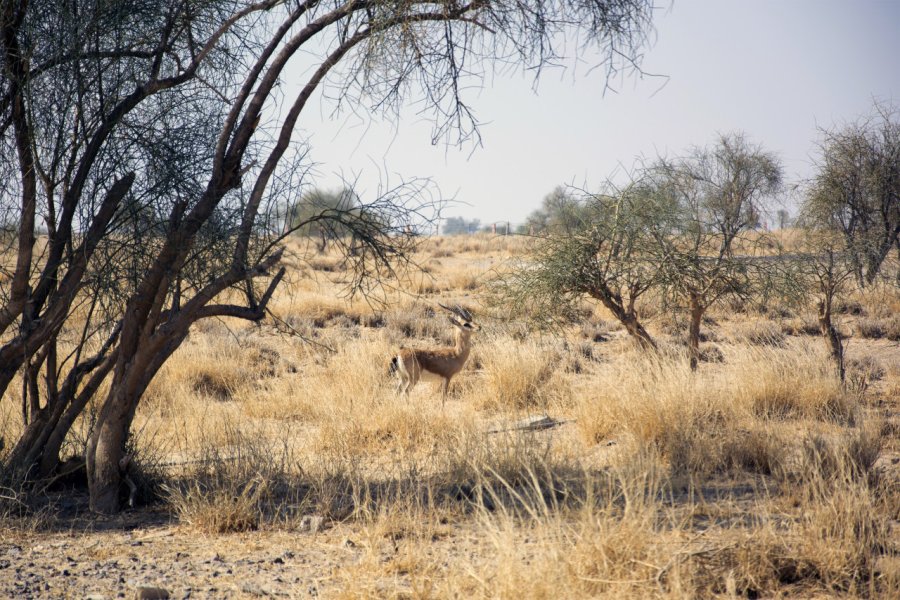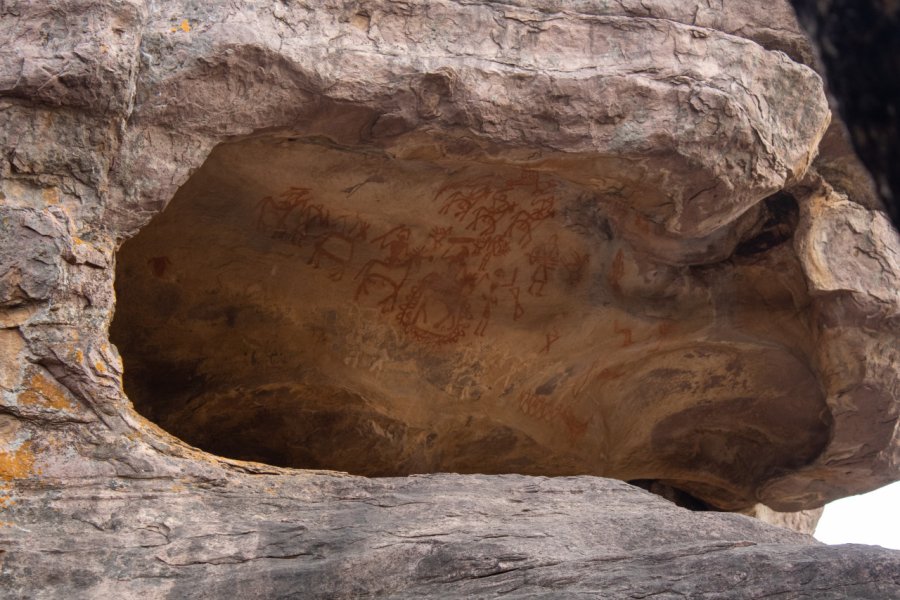Travel guide North India
"Incredible India" is the motto chosen by the Tourist Board to promote the incredible richness of the country. This expression will accompany you throughout your trip to North India where you will go from amazement to wonder. From the joyful hustle and bustle of cities such as New Delhi and Calcutta to theHimalayas, which are ideal for a spiritual retreat, from the masterful beauty of the Taj Mahal to the mystical city of Benares, also known as Varanasi, it is difficult to remain indifferent to India... Traveling to North India means taking the risk of going back, even if it is only to better understand its ancestral culture and its founding myths With the North India travel guide in your pocket so that you don't miss anything, you could well fall in love for life with this marvelous, beautiful and complex country.
What to see, what to do North India?
-
Book an activity
-
Customized travel
- The most beautiful cities North India
When to go North India ?
The best time to visit North India is from mid-November to mid-March but the high tourist season starts in October and continues until April, when prices are highest in hotels and restaurants. Exceptions: the Himalayan regions (North Bengal, Sikkim, Himachal Pradesh, Uttarankhand) where temperatures are often below zero at this time. It snows a lot and some sites are even inaccessible. From October to April, it is therefore the low season for these different areas. The low tourist season in North India begins in mid-April and ends at the end of September. From May to the beginning of July, the heat is stifling in North India; the temperatures are on average 45°C. Because of this heat, tourists rarely visit North India during this period. Prices are low but you really need to have courage to endure the temperatures in question. We advise you not to travel to India at this time.
In the climatic resorts of the Himalayan foothills, such as North Bengal (Darjeeling, Kalimpong), Sikkim, Himachal Pradesh (Shimla, Dharamasala), or Uttarankhand (Mussoorie, Nainital), it is however cooler (about 20 degrees) at this time, so it is the high tourist season for this region of North India.
If you go to North India in October or November, you will be able to attend the Diwali festival, the most important Hindu festival of the year. At night, candles are lit in front of every house to celebrate the return of Rama to his kingdom of Ayodhya, firecrackers and fireworks are set off, food is eaten and gifts are exchanged.
Holi. And if you go to North India, in February or March, it is the festival of colors that marks the beginning of spring. Young and old alike, armed with water pistols filled with colored powder, engage in "battles" in the streets.
Suggested addresses North India
Travel North India
-
Find a hotel
-
Car Rental
-
-5% on travel insurance-15% off travel insurance
-
Find a local agency
Vaste comme six fois la France, l’Inde ne peut pas être appréhendée en un seul voyage, même si on se limite à sa moitié Nord. Pour vous donner une idée, il ne faut pas moins de 8 heures de train pour relier Udaipur et Ahmedabad, pourtant situées à moins de 200 km l’une de l’autre. Pour éviter de transformer le voyage en une course contre la montre, mieux vaut se concentrer sur une région, telle que le Rajasthan, les contre-forts de l’Himalaya ou le Bengale-occidental. Chacune regorge de richesses naturelles et culturelles, il y en a pour tous les goûts. Nous vous proposons ici quelques idées d’itinéraires qui vous permettront de découvrir certaines régions du nord du pays, ou de l’explorer plus en profondeur pour ceux qui connaissent déjà. Il convient de régler les détails des transports en avance, car même les trajets les plus courts peuvent parfois prendre un certain temps en Inde.
Find unique Stay Offers with our Partners
How to go North India
How to go alone
Several airlines fly directly to New Delhi from Europe and the Middle East. Book early for the best prices! Locally, it's fairly easy to arrange travel, as transportation rates are low even at the last minute. North India is safe, but you should avoid hanging out on the streets late at night, and for women, it is important to avoid short clothing and to cover your knees and shoulders to avoid being bothered.
How to go on a tour
There are many different tours in North India and you can choose to do a classic tour including the big cities like Delhi and the key monuments like the Taj Mahal as well as a thematic tour, cultural for example around Hinduism or Buddhism. North India being a remote and exotic country, it takes some time to acclimatize, not to mention the long trips there; we therefore recommend a minimum 15-day tour and not just 10 days.
How to get around
It is quite easy to travel by air in North India due to the frequent and regular service to the various airports via regular and low-cost airlines. India's rail network is huge and well developed, including in North India. It is a low-cost means of transportation but the trains are often full. Buses also serve North India well with fares generally equivalent to those of2nd class trains.
Featured articles North India
Discover North India
India is a real kaleidoscope of cultures and religions, a true ode to diversity. The north of the country has a rich history that has shaped the trajectory of an entire people. However, each state has its own cultural heritage, traditions, language, gastronomy, art forms... Religion is omnipresent in the daily life of all Indians, whether Hindu, Muslim, Catholic, Buddhist, Jain or Parsi. The north of India also offers sumptuous and varied landscapes, which vary according to the regions visited, a fauna where the Bengal tiger and the elephant hold a predominant place, a luxuriant vegetation, and inescapable historical monuments. This chapter presents the different facets of the north of the country, its history, its specificities, its sophisticated gastronomy, its inhabitants... And you will even discover why cows are considered sacred in India!
Pictures and images North India
The 12 keywords North India
1. #Ashram
A place dedicated to meditative retreat, inner search, spiritual practice and community life. It is here that the guru teaches his art and knowledge to his disciples. Most Western visitors come to ashrams to practice and learn yoga and meditation intensively.
2. #Bazaar
The most common word for a market. These stalls sell all kinds of goods (fabrics, food, religious objects, fruits and vegetables, jewelry, clothes...), and you will take the opportunity to learn how to bargain. In each city and each village, the bazaar is a real place of life, cultural mix and meetings.
3. #Bollywood
A contraction of Bombay and Hollywood, it is the world's leading location for film shooting and production: between 1,500 and 2,000 films a year, broadcast throughout the country and the world. The most popular genre is the masala, which blends several genres in one film (musical, romance, action, etc.) for over three hours.
4. #Chai

THE national drink! It is impossible not to taste the Indian spicy tea, the masala chai. It will be offered to you at the locals', in the stalls, in the street, in the stations, in the trains... It is traditionally prepared with milk, sugar and spices (ginger, cardamom, cloves, pepper... depending on the recipe).
5. #Elephant

This peaceful pachyderm is often associated with Ganesh, the elephant-headed god of Hinduism. A sign of wealth and power, it was once part of every royal procession and was used by the maharajas to hunt tigers. Nowadays, it blesses the faithful in the temples. The country would count approximately 27 000 wild elephants.
6. #Ganges

This mythical river, sacred to the Hindus, takes its source in the Himalayas, crosses the North Indian plain, to flow into the Bay of Bengal after a journey of nearly 3,000 km. The faithful, especially in Varanasi, come to wash their sins by immersing themselves in it, and scatter the ashes of their dead to free their souls.
7. #Himalaya
The "abode of snow" (Sanskrit) is a mountain range separating the Indian subcontinent from the Tibetan plateau. The result of the collision of the Indian and Eurasian plates, this massif is the source of the country's main rivers. India is home to the world's3rd highest peak, at 8,586 m: Kangchenjunga in Sikkim.
8. #Lassi
Traditional Indian drink, based on fermented milk from the churning of yogurt. It can be plain, salty, spicy or sweet. They can be flavored with mango, dried fruits... or even cannabis like the famous bhang lassi. Alkaline like all dairy products, it is very appreciated after a strongly spiced dish!
9. #Maharaja
In Sanskrit, the term raja is used to designate any monarch or prince. The maharaja is a "great king", a title reserved for the overlords of several rajas. Muslim rulers were called nawab, which gave rise to the French nabab. They all lost their privileges and territories when India became independent.
10. #Namaste

The word namaste literally means: I greet you. The gesture (hands joined at heart level and head bow or hands joined at forehead level and lowered towards the heart), symbolizes faith in the divine spark in each of us, located in the heart chakra. It is an expression of deep respect.
11. #Tiger
The world's largest wild cat is India's national symbol. After almost disappearing due to intensive hunting until 1970, the country now boasts the world's largest population of Bengal tigers. Shiva is depicted wearing a tiger skin, and Durga, the eighteen-armed goddess, has a tiger for a mount.
12. #Yoga
A philosophy of life encompassing hygiene, diet, physical exercises (postures or asanas), meditation and moral asceticism, with the aim of achieving the unification of the human being. Many Westerners come to India to learn or perfect their practice, particularly in Rishikesh, the yoga capital of the world.
You are from here, if...
You eat with one hand, preferably the right. The left hand is used for impure acts such as personal hygiene.
You remove your shoes before entering a house, temple, mosque or even a store.
You wear loose-fitting clothes. Respectable women cover their shoulders and legs to the ankles. Men avoid shorts.
You accept curiosity about yourself. Don't be surprised if you're stared at in public places or asked questions about your origins, social status or religion. Indians are curious.
Don't put your lips on an object intended for several people (glass, bottle, cup...).
You don't systematically thank someone who helps or serves you. The opposite is considered offensive.
You don't indulge in affectionate gestures with your other half in public. Embraces and tender gestures are equated with the sexual act.





